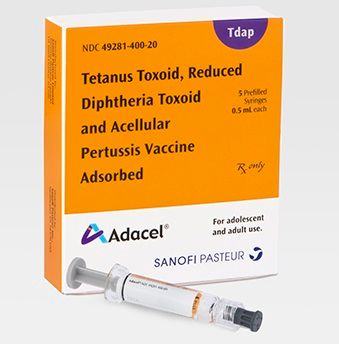Article
Sanofi Pasteur gains approval for more Tdap indications
A marketing challenge: how to make more adults aware of anti-bacterial booster shots

The news is that in January, Sanofi Pasteur gained FDA approval for a new indication for its branded Tdap vaccine, Adacel. Adacel has been on the market since the mid-2000s, approved as a booster shot for adolescents and adults. Now, it has been demonstrated by clinical trial to be well-tolerated when administered as a repeat booster shot to patients aged 10 to 64. According to data Sanofi cites, three out of four adults lack the booster shot—and this is resulting in the rise of pertussis (whooping cough), which goes through a multi-year up-and-down cycle of infecting some 25,000 Americans annually. (Diphtheria is practically nonexistent in the US; and tetanus is a non-contagious infection caused by environmental exposure to that bacteria.)
Tdap stands for “Tetanus toxoid, reduced Diphtheria toxoid and Acellular Pertussis;” as such, it is contrasted with the pediatric vaccine version, known as DTap (Diphtheria and Tetanus toxoids and Acellular Pertussis). The difference is a higher dosage of the diphtheria and pertussis components for DTap. Adacel, a Tdap vaccine, can now be administered repeatedly, and has the advantage of providing better pertussis protection when compared to the typical adult practice of getting a “tetanus booster” after experiencing a wound. (The tetanus booster, in reality, has usually been a tetanus-diphtheria vaccine.)
The pediatric and adult Adacel vaccination pattern presents some novel challenges, according to Dr. David Greenberg, regional medical head, North America, at Sanofi. Pediatric administration of DTap is widespread, but the use of a TD vaccine as a booster provided no protection against pertussis. Now, Adacel is the only Tdap vaccine approved in the US for repeat dosage; it is also the only one available with as a prefilled syringe with no latex exposure. Greenberg says that with the expanded indication, physicians will have better resources to treat their patients. Sanofi is awaiting a recommendation along these lines from CDC in the near future, and is hoping to educate healthcare providers about the new indication.
Newsletter
Stay ahead in the life sciences industry with Pharmaceutical Commerce, the latest news, trends, and strategies in drug distribution, commercialization, and market access.





